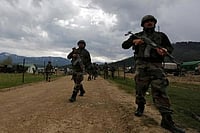Mumbai has emerged as the most affected area in Maharashtra for the measles outbreak, amounting for 303 of the total 717 cases reported across the state.
Maharashtra measles outbreak has so caused 14 deaths, 10 of which were reported in Mumbai.
Five fresh measles cases were discovered in Mumbai on Tuesday.
Mumbai has recorded 74 outbreaks so far this year. If there are five suspected cases within a week of which more than two are confirmed by laboratory, then it is termed as an outbreak. Mumbai also recorded 11,390 suspected cases since January 1, 2022.
Massive rise in Mumbai measles cases
Mumbai has recorded 303 measles cases so far this year. This amounts to more than three-fold rise in the cases compared to last year.
In 2021, Mumbai and surrounding area recorded 92 cases, 193 cases in 2020, and 153 cases in 2019, according to The Indian Express.
Mumbai reported 10 deaths since the start of the year, Bhiwandi 3 and Vasai-Virar area one.
A special inoculation drive is being undertaken amid rising cases.
What's measles, how it affects people
Measles is a viral infection and it mainly affects children.
Of the 14 measles deaths, four were in the 0-11 months age group, eight were aged 12-24 months, and there were only adults in the 25-60 age group.
Measles is a highly contagious disease and its virus can remain in the air for up to hours, according to Healthline, which adds that sneezing and coughing can spread the disease.
"These respiratory particles can also settle on objects and surfaces. You can become infected if you come into contact with a contaminated object, such as a door handle, and then touch your face, nose, or mouth," notes Healthline.
Measles usually appears first as a rash on the forehead. The infection first begins in the respiratory tract.
"An infected person can go on to spread the virus to anywhere between 9-18 susceptible individuals...An infected person is contagious for four days before the characteristic rash appears. After the rash appears, they’re still contagious for another four days," notes healthline.
Measles diagnoses, treatment
Measles can be confirmed by a blood test after you show the following measles symptoms:
- cough
- fever
- runny nose
- red eyes
- sore throat
- white spots inside the mouth
Measles is treated as per symptoms and a vaccine is also given post-infection.
Healthline says a measles vaccine can be given within 72 hours of exposure to the virus and a dose of immune proteins called immunoglobulin is taken within six days of exposure. Additional treatment is according to symptoms, such as fever, cough, fatigue, etc.
Low measles vaccination coverage
Though a measles vaccine is available, its coverage is low in affected areas in Maharashtra and its global coverage too has reduced over the years.
In Maharashtra's worst affected city Mumbai, measles vaccination coverage in 2022 has been just 41.9 per cent, as per a report in The Hindu.
The report said the low measles vaccination coverage has been flagged by the Union health ministry.
"It is clear that in all such geographies, the effected children are unvaccinated and the average coverage of MRCV [Measles and Rubella containing vaccine] among the eligible beneficiaries is also significantly below the national average," The Hindu quoted a Health Ministry letter as saying.
Of 14 deaths, only one had taken vaccine, according to an official statement cited by PTI.
Such downward trend in measles vaccination are seen worldwide too.
CNN reported that the current measles vaccination rate is the lowest in the world since 2008.
"Global coverage with the first dose of the measles vaccines increased from 72 per cent in 2000 to 86 per cent in 2019. However, that rate dropped to 83 per cent in 2020 and continued to fall to 81 per cent in 2021. The researchers say this is the lowest coverage rate since 2008," reported CNN last week.
(With PTI inputs)


























